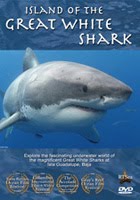Disruption of the Top-Down Predator/Prey Relationship
 There is the common analogy of the predator-prey pyramid, often used when discussing the role of sharks in the marine ecosystem, where a layered pyramid is used to describe not only the relationship of larger predators feeding on smaller animals (top down) but also how the triangular shape represents the reproductive rates (from slow-reproducing top predators down to more prolific prey, like feeder fish or plankton).
There is the common analogy of the predator-prey pyramid, often used when discussing the role of sharks in the marine ecosystem, where a layered pyramid is used to describe not only the relationship of larger predators feeding on smaller animals (top down) but also how the triangular shape represents the reproductive rates (from slow-reproducing top predators down to more prolific prey, like feeder fish or plankton).A study published in the Journal of Animal Ecology discussed some of the challenges faced by top-down or apex predators when their numbers are reduced, say by overfishing. As one might expect, there are shifts that take place in the numbers of smaller predators (those that were once prey to the larger predator), but there can also be changes that impact the larger predators' ability to recover even when the outside influence (overfishing) is removed.
Without the natural balance afforded by the top-down relationship, lower level predators can become both a predator of the larger predator when it's a juvenile and a competitor for the same prey the youthful apex predator needs to feed on. As an example, we think of great white sharks feeding on seals and large fish like tuna, but as juveniles these sharks feed on smaller fish and can, if reduced in significant numbers, find themselves in competition more and more with predators who would someday possibly be prey to the shark if it can survive to maturity. Predation and competition - two of the cascading effects that occur within the predator-prey relationship when it is disrupted.
Blue Carbon Sinks and the Importance of Coastal Habitats
 An assessment originating from Norway for the United Nations Environment Programme emphasized the importance of our coastal vegetated habitats (mangrove, salt marshes, and seagrasses) as repositories for carbon emissions, or Blue Carbon Sinks. Here are some numbers that illustrate how important these coastal marine environments in the climate change debate:
An assessment originating from Norway for the United Nations Environment Programme emphasized the importance of our coastal vegetated habitats (mangrove, salt marshes, and seagrasses) as repositories for carbon emissions, or Blue Carbon Sinks. Here are some numbers that illustrate how important these coastal marine environments in the climate change debate:- They make up less than 0.5% of the ocean seabed, but account for 50-70% of the total carbon storage of the ocean's sediments.
- They consume 235 to 450 tons of carbon each year, nearly half of the 1,000 tons produced by the transportation sector globally.
- Preventing further loss of these coastal habitats would reduce carbon by up to 7% in two decades and be equal to 10% of the CO2 reduction necessary to remain under 450ppm.
- However, the ongoing loss of these ecosystems is greater than any other on earth, as much as 4 times that of rainforest deforestation.
- Loss of coastal vegetated habitats is currently at 2-7% annually, a seven-fold increase from 50 years ago.
The Challenge of Understanding Ocean Ecosystem Resilience
 Finally, an article in the Proceedings of the Royal Society of London discussed the challenges in forecasting the limits of resilience in marine ecosystems. Resilience being either the ability to resist subtle changes in an environment until a tipping point is reached or by the environment's ability to make subtle - and sometimes not so subtle - changes in a quest to find or sustain a new equilibrium. To study these effects requires both long-term data and an understanding of some very subtle links and interactions taking place - not something that is easy to tackle and so forecasting and projecting accurate models has lagged behind other studies in theory and management or policy.
Finally, an article in the Proceedings of the Royal Society of London discussed the challenges in forecasting the limits of resilience in marine ecosystems. Resilience being either the ability to resist subtle changes in an environment until a tipping point is reached or by the environment's ability to make subtle - and sometimes not so subtle - changes in a quest to find or sustain a new equilibrium. To study these effects requires both long-term data and an understanding of some very subtle links and interactions taking place - not something that is easy to tackle and so forecasting and projecting accurate models has lagged behind other studies in theory and management or policy.Yet the need for this information is critical in the development of those very theories and management and policy requirements if their results are to be accurate and sustainable. The article stresses "the challenge to theoretical and field ecologists is to make the shift from hindsight to a more predictive science that is able to assist in the implementation of ecosystem-based management." As we have seen with continually revised projection models regarding climate change, it's not easy but the need is absolute.







No comments:
Post a Comment